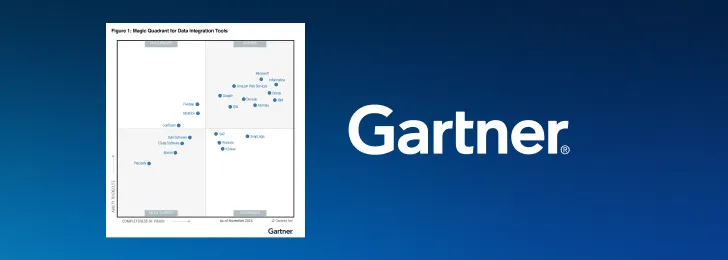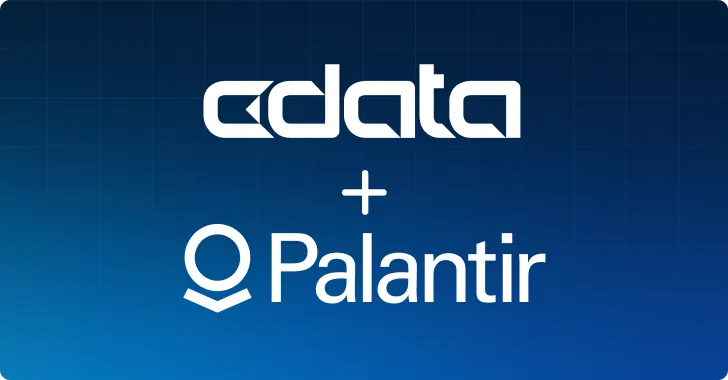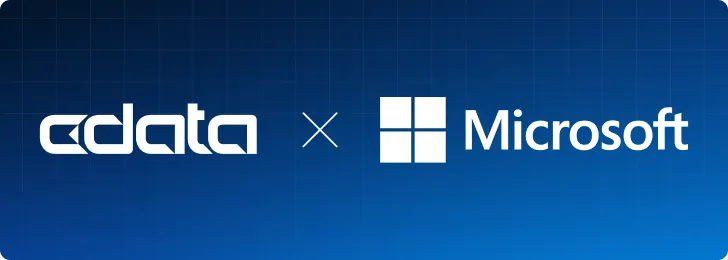
The growing data transformation trend reflects the ever-increasing need for businesses to convert raw data into actionable insights that drive innovation. To gain a competitive edge, organizations must effectively transform and analyze data from diverse sources. Choosing the right data transformation tools helps businesses unlock valuable insights, improve processes, and fuel growth.
In this blog post, we’ll compare and contrast dbt Core and dbt Cloud, focusing on their key differences to help you choose the option that best meets your requirements.
What is dbt Core?
dbt Core (dbt stands for Data Build Tool) is an open-source software package that automates and streamlines data transformations within modern data warehouses. dbt Core operates as a command-line tool that lets data engineers and analysts define and execute data transformation workflows using SQL, leveraging the power and familiarity of SQL to manipulate and aggregate data. Its features enable you to build, maintain, and evolve complex data pipelines. dbt Core’s code-first approach to data transformation empowers teams to collaborate, iterate, and scale data transformations effectively while ensuring data quality, consistency, and reproducibility.
Key features and functionalities of dbt Core
- SQL-based transformations: dbt Core leverages SQL as its primary language for defining data transformations. You write SQL queries to transform raw data into analysis-ready datasets, making it easy to express complex transformation logic using familiar SQL syntax.
- Dependency management: dbt Core has built-in dependency management capabilities, which lets you define dependencies between different transformation steps. This ensures that transformations are executed in order, minimizing errors and ensuring data integrity.
- Incremental processing: dbt Core supports incremental processing, so you can efficiently update only the portions of data that have changed since the last transformation run. This reduces processing time and resource consumption, especially for large datasets.
- Version control: dbt Core integrates with version control systems like Git, so you can track changes to data transformation code over time.
- Testing framework: dbt Core includes a testing framework that lets you define and run tests on your data transformation code. This ensures data quality and consistency because transformation results are validated against expected outcomes and business rules.
- Documentation generation: dbt Core automatically generates documentation for data transformation workflows, including descriptions of tables, columns, and transformation logic. This auto-generated documentation helps you understand and maintain data pipelines.
- Customizable configuration: dbt Core’s flexible configuration system lets you customize various aspects of data transformation workflows, including database connections, execution settings, and logging options.
dbt Core deployment options
dbt Core offers multiple deployment options to meet organizations’ diverse needs. These options let you choose the deployment model that best fits your requirements, preferences, and existing infrastructure. Here's a brief overview of the available deployment options:
- Local installation: Provides full control over the installation and configuration of dbt Core, making it suitable for individual users, small teams, or development environments.
- Cloud-based deployment: Leverages cloud infrastructure on environments such as AWS, Google Cloud Platform, or Microsoft Azure. Allows you to scale resources dynamically, handle large volumes of data, and execute complex transformations efficiently. Well-suited for organizations with existing cloud infrastructure or those seeking scalability and flexibility.
- Containerized deployment: Uses container orchestration platforms like Docker and Kubernetes to deploy as a containerized application. Allows you to package dbt Core and its dependencies into lightweight, portable containers, so it’s easier to deploy, manage, and scale.
- Serverless deployment: Leverages serverless computing platforms like AWS Lambda or Google Cloud Functions to deploy and execute workflows. Eliminates the need to provision and manage servers, so users can run dbt Core workflows cost-effectively, and in a scalable manner. Especially suited for intermittent or event-driven data transformation tasks.
What are the limitations of dbt Core?
While dbt Core offers numerous benefits for data transformation and analytics, it also has some known drawbacks and limitations. Here are several drawbacks associated with dbt Core:
- Setup overhead: Setting up and configuring dbt Core can require additional effort and technical expertise, especially for organizations with complex infrastructure or specific requirements. Installation, configuration, and maintenance tasks can eat into time and resources.
- Complicated scheduling: Scheduling capabilities are not built-in, so you must implement external scheduling mechanisms. Managing scheduling for dbt jobs can be complex, particularly for organizations with frequent or intricate data transformation workflows.
- Limited collaboration features: dbt Core lacks built-in collaboration features, so it can be challenging for teams to collaborate effectively on data transformation projects.
- Dependency management challenges: Managing dependencies between dbt models and projects can be difficult, especially in complex data transformation workflows. You might hit issues with versioning, dependency resolution, and conflicts.
- Separate documentation: dbt Core doesn’t provide integrated documentation generation, so you need to manage documentation separately from your data transformation code. This can lead to discrepancies, inconsistencies, and extra overhead.
Keep these limitations in mind as your organization determines whether dbt Core is the right choice for your data transformation needs.
What is dbt Cloud?
dbt Cloud is a cloud-based data transformation platform that builds upon the core functionality of dbt Core. It provides additional features and capabilities for managing, orchestrating, and executing dbt projects.
dbt Cloud leverages the same fundamental principles and technologies as dbt Core, including SQL-based transformations, version control integration, and dependency management. It extends these capabilities by offering a fully managed environment for running dbt projects, eliminating the need to provision or manage infrastructure.
Key features and functionalities of dbt Cloud
dbt Cloud complements dbt Core by offering a scalable and collaborative environment for executing dbt projects. While dbt Core provides the foundational tools and capabilities for data transformation, dbt Cloud extends these capabilities with features tailored to the needs of cloud-based data teams. Here's an overview of its key features:
- Web-based UI: dbt Cloud provides a user-friendly interface for managing dbt projects, scheduling jobs, monitoring execution, and viewing results. The UI offers intuitive navigation and visualization tools, so people can interact with their dbt projects without using the command-line interface.
- Scheduling: dbt Cloud lets you schedule and orchestrate dbt jobs, so you can define automated workflows and dependencies between different transformation tasks. Scheduling jobs to run at specific times or in response to events ensures timely execution of data transformation processes. These capabilities help automate repetitive tasks and make sure that data transformations are executed consistently and efficiently.
- Collaborative workspaces: dbt Cloud supports collaborative workspaces, which means that multiple users can work together on dbt projects within a shared environment. The workspaces provide features and tools which facilitate teamwork and knowledge sharing among team members. Collaborate on data transformation tasks, share insights, and track changes to projects.
What are the limitations of dbt Cloud?
While dbt Cloud offers numerous benefits for data transformation and analytics, it also has some known drawbacks and limitations, including:
- Cost: dbt Cloud is a subscription-based service, so costs can quickly escalate based on factors such as your organization size, the number of users, and the frequency of data transformation jobs. For organizations with limited budgets, the recurring subscription fees can be significant.
- Limited control over infrastructure: While dbt Cloud eliminates the need for you to manage infrastructure, it also limits your control over the underlying infrastructure. Organizations with specific requirements for infrastructure configuration may find the lack of control restrictive.
- Vendor lock-in: Adopting dbt Cloud can lead to vendor lock-in, because organizations become dependent on the service for their data transformation needs. Switching to alternative solutions or self-hosted deployments might be challenging or costly, especially if your organization has invested heavily in dbt Cloud.
- Customization limitations: dbt Cloud offers a predefined set of features and capabilities, so you might find that customization options are limited when compared to self-hosted deployments. If your organization has specialized requirements, dbt Cloud might not fully meet your needs, which can end up requiring workarounds or compromises.
- Performance considerations: Although dbt Cloud is designed to handle large-scale data transformation jobs, performance can vary depending on factors such as data volume, complexity of transformations, and resource allocation. If your company has stringent performance requirements, you might want to consider alternative deployment options.
What are the key differences between dbt Core and dbt Cloud?
Here's a detailed comparison between dbt Core and dbt Cloud features:
|
Feature
|
dbt Core
|
dbt Cloud
|
|
Deployment and Setup
|
Requires self-hosting and setup
|
Fully managed cloud service
|
|
User Interface and Workflow
|
Command-line interface (CLI)
|
Web-based UI with intuitive workflow
|
|
Infrastructure Management
|
User-managed
|
Fully managed by dbt Cloud
|
|
Scheduling and Orchestration
|
No built-in scheduling or orchestration
|
Built-in scheduling and job orchestration
|
|
Semantic Layer
|
Limited semantic layer capabilities
|
Enhanced semantic layer for data modeling
|
|
APIs
|
No native APIs for integration
|
REST APIs for integration with other tools
|
|
Version Control and Collaboration
|
Integration with Git for version control
|
Collaboration features and Git integration
|
|
Scalability
|
Limited by user's infrastructure
|
Cloud-based scalability
|
|
Data Security
|
Dependent on user's implementation
|
Managed by dbt Cloud
|
|
Customization
|
More customization options
|
Limited customization options
|
|
Support
|
Community support
|
Dedicated support from dbt Cloud
|
|
Pricing and Cost Considerations
|
Free and open-source
|
Subscription-based pricing model
|
Depending on your organization's requirements and preferences, you might find that one solution is more suitable than the other.
dbt Core vs. dbt Cloud: When to choose one over the other
When to choose dbt Core
Here are some things to think about that might make you choose dbt Core:
- Organizations with existing infrastructure: If your organization has invested in its own infrastructure and prefers to maintain control over deployment and setup, dbt Core provides flexibility for self-hosting.
- Developers comfortable with CLI tools: dbt Core is well-suited for organizations whose developers are experienced working with command-line interface (CLI) tools. Developers proficient in SQL and command-line workflows quickly adapt to using dbt Core for data transformation tasks.
- Cost-conscious organizations: dbt Core is open-source and free to use, so it’s an attractive option for cost-conscious organizations. By leveraging dbt Core, you can avoid the recurring subscription fees associated with managed services like dbt Cloud.
- Preference for customization: Organizations that require extensive customization or have specific requirements for infrastructure, workflows, or data transformation processes may prefer dbt Core because it gives you full control over deployment, setup, and customization.
- Existing investments in tooling: Organizations with existing investments in tooling or infrastructure for data transformation might find it more practical to use dbt Core. Since dbt Core integrates seamlessly with version control systems like Git, you can leverage existing investments while adopting dbt Core for data transformation.
When to choose dbt Cloud
And here’s a similar list that might lead you to choose dbt Cloud:
- Ease of use and rapid adoption: dbt Cloud’s user-friendly web-based interface simplifies data transformation tasks, so it’s a good choice for organizations seeking rapid adoption.
- Collaborative teams: Collaborative workspaces allow team members to work together on data transformation projects in a shared environment. This facilitates teamwork, knowledge sharing, and collaboration.
- Prioritizing scalability and security: dbt Cloud’s scalability and security features make it a good choice if your organization prioritizes these features. It handles large volumes of data and ensures data privacy and compliance with security standards.
- Managed infrastructure and maintenance: Organizations that prefer to offload infrastructure management and maintenance can benefit from dbt Cloud's fully managed service. It handles all aspects of infrastructure provisioning, scaling, and maintenance.
- Scheduling and orchestration: Built-in scheduling and job orchestration enable organizations to define automated workflows and dependencies between transformation tasks.
- Integration with other tools: dbt Cloud integrates seamlessly with version control systems like Git and collaboration tools, so organizations can track changes to data transformation projects and collaborate with team members.
- Documentation and governance: Documentation for data transformation projects is automatically generated and maintained, so you have a centralized repository for schemas, transformation logic, and dependencies. This enhances knowledge-sharing and governance within the organization.
CData Sync and dbt
CData Sync supports dbt transform natively, allowing you to create and trigger centralized, versioned transformations in both dbt Core and dbt Cloud. With Sync, you can automate the transformations, calling them after the necessary replications have completed.
CData Sync is designed to let users build streamlined data pipelines right out-of-the box, integrating directly with your existing architecture.
Explore CData Sync
Get a free product tour and start a free 30-day trial to get your big data integration pipelines built in just minutes.





